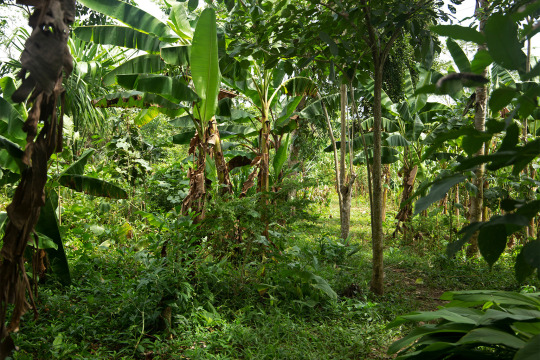#ecological systems
Explore tagged Tumblr posts
Text
The new movie looks cool, but...

BULLLLLLLLLLLLLLCRAAAAAAAAAAAAAAAAAP
#DO YOU HAVE ANY IDEA HOW MUCH FOOD WOULD BE REQUIRED TO SUSTAIN THAT??????????#THAT'S NUBLAR'S ENTIRE HERBIVORE POPULATION TWICE OVER#AT THE LEAST#THERE ARE EIGHTY TITANOSAURS THERE#EIGHTY#DO YOU KNOW WHAT EIGHTY ELEPHANTS COULD DO#AND THOSE ARE ALL ADULTS#THIS IS NOT FACTORING IN BABIES#AND JUVENILES#how big is this island do you know how big islands are#guuuuuuuuuyyyyyyyyyyyyyyys#ecological systems#even if this is the first time the titanosaur population has reached this level#they need to address this#you need to be able to SEE the trees growing#eighty titanosaurs eating food seven days a week#DO YOU HAVE ANY COMPREHENSION OF WHAT THAT WOULD LOOK LIKE#nublar was difficult enough to work with#but that was like “okay so there's a dozen brachiosaurs and a dozen apatosaurs and thirty triceratops and 100 hadrosaurs and 100 small ones#this? there shouldn't be any vegetation left between the front of that herd and the rear
13 notes
·
View notes
Text
How does one account for the unique environmental conditions and ecological systems of a region in architecture?
Accounting for the unique environmental conditions and ecological systems of a region is a crucial aspect of architectural design. Every region has its distinct environmental characteristics, including climate, topography, vegetation, and ecological systems. Architects must consider and respond to these factors to create sustainable, resilient, and contextually appropriate designs. This article…

View On WordPress
#architecture#climate-responsive design#contextually appropriate designs#continuous learning#ecological balance#ecological systems#energy efficiency#environmental impact#experts and consultants#innovation#interdisciplinary collaboration#passive design techniques#regional variations#renewable resources#resilience#site analysis#site planning#sustainability#sustainable landscaping#technical knowledge#unique environmental conditions#user comfort
1 note
·
View note
Text
The Final Day of City Nature Challenge YXE: A Nature Lover’s Last Call!

View On WordPress
#FriendsAreas#10th anniversary#amphibians#animal behavior#animal sightings#April 28#backyard wildlife#biodiversity#biodiversity challenge#birdwatching#bumblebees#Canada#citizen engagement#citizen participation#Citizen Science#City Nature Challenge#city parks#Community Involvement#conservation#Conservation Efforts#Earth Month#eco-friendly fun#ecological data#ecological health#ecological systems#ecosystem monitoring#educational experience#environment#environmental appreciation#environmental awareness
0 notes
Text

Climate literacy principle #4: As of 2021, Earth had warmed by about 1.1°C above preindustrial levels. The current rate of warming is roughly 30x faster than the rate at which Earth warmed as it emerged from the last ice age.
More: https://www.climate.gov/teaching/climate/climate-literacy-essential-principles
#NOAA#Climate.gov#Climate Literacy#Teaching Climate#Large Scale Climate Changes#Ecological Systems#What NOAA Does
0 notes
Note
if Killer was a worm would Color still love him? Platonically ofc. I'd see Color getting a nice big tank for Killer with lots of variety

#he would absolutely still love him#and absolutely get him a nice big tank full of food and fun stuff and an ecological system just for him#take him outside with him hiking even#anothers ask#anothers art#killer sans#color sans#color spectrum duo
508 notes
·
View notes
Text
I fucking loathe this ad that keeps showing up on my dash.

How about "help me fight the person who created you"?
#or maybe 'help me turn your systems off and reverse the ecological impact you've had on the environment'#let me know when that feature drops#i'm personally proud of everyone suffering from writer's block who refuses to turn to this crap#you're doing a great job and i believe in you#fuck gen ai
184 notes
·
View notes
Text
"In response to last year’s record-breaking heat due to El Niño and impacts from climate change, Indigenous Zenù farmers in Colombia are trying to revive the cultivation of traditional climate-resilient seeds and agroecology systems.
One traditional farming system combines farming with fishing: locals fish during the rainy season when water levels are high, and farm during the dry season on the fertile soils left by the receding water.
Locals and ecologists say conflicts over land with surrounding plantation owners, cattle ranchers and mines are also worsening the impacts of the climate crisis.
To protect their land, the Zenù reserve, which is today surrounded by monoculture plantations, was in 2005 declared the first Colombian territory free from GMOs.
...
In the Zenù reserve, issues with the weather, climate or soil are spread by word of mouth between farmers, or on La Positiva 103.0, a community agroecology radio station. And what’s been on every farmer’s mind is last year’s record-breaking heat and droughts. Both of these were charged by the twin impacts of climate change and a newly developing El Niño, a naturally occurring warmer period that last occurred here in 2016, say climate scientists.
Experts from Colombia’s Institute of Hydrology, Meteorology and Environmental Studies say the impacts of El Niño will be felt in Colombia until April 2024, adding to farmers’ concerns. Other scientists forecast June to August may be even hotter than 2023, and the next five years could be the hottest on record. On Jan. 24, President Gustavo Petro said he will declare wildfires a natural disaster, following an increase in forest fires that scientists attribute to the effects of El Niño.
In the face of these changes, Zenù farmers are trying to revive traditional agricultural practices like ancestral seed conservation and a unique agroecology system.

Pictured: Remberto Gil’s house is surrounded by an agroforestry system where turkeys and other animals graze under fruit trees such as maracuyá (Passiflora edulis), papaya (Carica papaya) and banana (Musa acuminata colla). Medicinal herbs like toronjil (Melissa officinalis) and tres bolas (Leonotis nepetifolia), and bushes like ají (Capsicum baccatum), yam and frijol diablito (beans) are part of the undergrowth. Image by Monica Pelliccia for Mongabay.
“Climate change is scary due to the possibility of food scarcity,” says Rodrigo Hernandez, a local authority with the Santa Isabel community. “Our ancestral seeds offer a solution as more resistant to climate change.”
Based on their experience, farmers say their ancestral seed varieties are more resistant to high temperatures compared to the imported varieties and cultivars they currently use. These ancestral varieties have adapted to the region’s ecosystem and require less water, they tell Mongabay. According to a report by local organization Grupo Semillas and development foundation SWISSAID, indigenous corn varieties like blaquito are more resistant to the heat, cariaco tolerates drought easily, and negrito is very resistant to high temperatures.
The Zenù diet still incorporates the traditional diversity of seeds, plant varieties and animals they consume, though they too are threatened by climate change: from fish recipes made from bocachico (Prochilodus magdalenae), and reptiles like the babilla or spectacled caiman (Caiman crocodilus), to different corn varieties to prepare arepas (cornmeal cakes), liquor, cheeses and soups.
“The most important challenge we have now is to save ancient species and involve new generations in ancestral practice,” says Sonia Rocha Marquez, a professor of social sciences at Sinù University in the city of Montería.
...[Despite] land scarcity, Negrete says communities are developing important projects to protect their traditional food systems. Farmers and seed custodians, like Gil, are working with the Association of Organic Agriculture and Livestock Producers (ASPROAL) and their Communitarian Seed House (Casa Comunitaria de Semillas Criollas y Nativas)...

Pictured: Remberto Gil is a seed guardian and farmer who works at the Communitarian Seed House, where the ASPROL association stores 32 seeds of rare or almost extinct species. Image by Monica Pelliccia for Mongabay.
Located near Gil’s house, the seed bank hosts a rainbow of 12 corn varieties, from glistening black to blue to light pink to purple and even white. There are also jars of seeds for local varieties of beans, eggplants, pumpkins and aromatic herbs, some stored in refrigerators. All are ancient varieties shared between local families.
Outside the seed bank is a terrace where chickens and turkeys graze under an agroforestry system for farmers to emulate: local varieties of passion fruit, papaya and banana trees grow above bushes of ají peppers and beans. Traditional medicinal herbs like toronjil or lemon balm (Melissa officinalis) form part of the undergrowth.
Today, 25 families are involved in sharing, storing and commercializing the seeds of 32 rare or almost-extinct varieties.
“When I was a kid, my father brought me to the farm to participate in recovering the land,” says Nilvadys Arrieta, 56, a farmer member of ASPROAL. “Now, I still act with the same collective thinking that moves what we are doing.”
“Working together helps us to save, share more seeds, and sell at fair price [while] avoiding intermediaries and increasing families’ incomes,” Gil says. “Last year, we sold 8 million seeds to organic restaurants in Bogotà and Medellín.”
So far, the 80% of the farmers families living in the Zenù reserve participate in both the agroecology and seed revival projects, he adds."
-via Mongabay, February 6, 2024
#indigenous#ecology#agroforestry#agriculture#traditional food systems#traditional medicine#sustainable agriculture#zenu#indigenous peoples#farming#colombia#indigenous land#traditional knowledge#seeds#corn#sustainability#botany#plant biology#good news#hope#climate action#climate change#climate resilience#agroecology#food sovereignty
1K notes
·
View notes
Text


Ducks. You want ducks.
#maybe im ignorant and there are societies who've had success with this method but uh#my family dilutes chicken manure for garden use bc they say its too noxious on plants at full potency#which makes me think those fish are gonna rot from ammonia#if thats a tank or small pond it's gonna accumulate waste FAST#and if this is part of a larger system or body of water i dont think this is a justifiable level of ecological impact#if you have the means to farm differently
53 notes
·
View notes
Text


In mid-August, a three year-old lawsuit charging that environmentalist groups were religious extremists comparable to some of the more violent, intolerant, ultra-orthodox Islamic sects collapsed when the attorney failed to meet a re-filing deadline with the U.S. Supreme Court.
The suit had been brought against the Forest Guardians, the Superior Wilderness Action Network, and the U.S. Forest Service by the 125 companies that make up the Associated Contract Loggers (A.C.L.) of northern Minnesota. The loggers were asking for $600,000 in damages and permission to plunder timber from the Superior National Forest.
Lawyers for the A.C.L. argued that deep ecology was actually a religion, and so by extension, environmental groups that espoused its philosophies were cults, and by outlawing timber cutting on so-called “federal land,” the Forest Service was favoring a particular set of religious doctrines and was therefore violating the guarantee of neutrality in matters of religion purportedly vouchsafed in the U.S. Constitution.
According to theological scholars at the logging company syndicate like former executive director, Larry Jones, Deep Ecology is an “earth-centered religion,” a “belief system” that holds that “trees and Man [sic] are equal.” Anti-logging activists who extol the virtues of forested spaces over industry profit and environmental degradation are spiritual zealots, and the government functionaries who are swayed by their proselytizing may turn out to be fanatical closet druids themselves.
Stephen Young, the A.C.L. lawyer and a former Republican Party senatorial candidate, explained his legal action on such esteemed venues as Rush Limbaugh’s radio show by saying that clear-cutting in national forests had been restricted by the Forest Service for no reason other than reverebce for some fringe New Age religion.
A U.S. District Court judge in Minnesota dismissed the case as “frivolous” in February 2000, but the A.C.L. petitioned the Supreme Court last year after reports that Wahabi Islamic extremists were responsible for the blitzkrieg attacks on the World Trade Center and the Pentagon.
“The doctrine of Deep Ecology is the very worldview that gave rise to eco-terrorism. We feel that after the events of September 11, it’s an obligation of the Supreme Court to keep religious fanaticism in check,” Young said. “Just as devout faith in the literal words of various Hadith of Mohammad gave the Taliban license to impose through state power harsh conditions on the women of Afghanistan, so Deep Ecology gives license to its adherents to take extreme actions against those who would live by different beliefs.”
Perhaps the less said about this sleazy episode the better, which is just as well, since it is so hard to get a firm analytic grasp on it because it is sad and sick on so many different levels. For instance, likening the plight of women in Afghanistan to that of lumber barons in northern Minnesota is staggering in its shamelessness, as it has been my experience that women living near industrial logging camps are subjected to at least the same sort of abuse, derision, and masculinist domination as women who had been living in Taliban-controlled Kandahar.
And we all know that if the U.S. government was serious about keeping homicidal religious terrorism in check, then John Ashcroft and the Army of God anti-abortionists would be in the Guantanamo Bay gulag. It was all obviously just a miserable attempt to slander and jam up anti-logging activists with legal action, and it failed.
But I can’t help thinking about the broader philosophical implications of who supported it. I have no idea as to whether or not there are Deep Ecologists involved in Forest Guardians or the Superior Wilderness Action Network (and I suspect that none are to be found among the Forest Service feds), but in demonizing Deep Ecology as an alien fanatical religious practice in this lawsuit, we can see once again how tighly Christianity is bound to capitalist exploitation and ecological destruction.
Deep ecology is not a single doctrine, but rather an ethical sensibility informed by a variety of perspectives on the relationship of hummankind to the whole of nature’s systems. We can oversimplifydeep ecology by saying that its fundamentals include a belief in the intrinsic value of all forms of life as well as the holistic diversity of those life forms. The economic, technological, and ideological beliefs that prop up Western civilization antagonistically threaten the existence and diversity of natural life systems.
Individuals who adhere to the ideas of Deep Ecology are obligated to work towards radically changing those deadly attitudes and social structures. Deep ecology challenges the long-held anthropocentrist notion which entitles humans to take advantage of and destroy wilderness at will and for private profit, a view obviously held sacred by the A.C.L. timber industrialists.
Anthropocentrism derives from core Judeo-Christian values that have been part of the settler-capitalist catechism on this continent since the early seventeenth-century. Consider, for example, the preaching of Puritan minister, John Cotton. In his popular pamphlet of the 1630’s, “God’s Promise to His Plantation,” Cotton claimed that God desired colonists to “take possesion” of land in New England, saying that whosoever “bestoweth culture and husbandry upon it” has an inviolable divine right to it.
The Native Americans, dying in large numbers from exposure to European diseases was proff that God wanted to wipe the slate clean for the Puritans and thereby better facilitate His decree in the Book of Genesis that humans aggresively “subdue” the earth. Christians were the center of the universe, exclusively licensed by Almighty God to dominate the land, eradicate wild nature, and replace it with the purity of civilization. “All the world out of the Church is as wilderness, or at best, a wild field where all manner of unclean and wild beasts live and feed,” Cotton proclaimed in 1642.
There were many others during the period who were at least as enthusiastic about Christ, colonization, and commercial cultivation as Cotton was, and these ideas, linked to distinctly Judeo-Christian models of linear (rather than seasonally cyclical) time, became ingrained in the settler psyche, especially during the era of westward expansion some two centuries later. Justified by the Calvinist capitalism of Adam Smith’s The Wealth of Nations — complete with its fallacious notions about the ennobling “civilizing” powers of wealth, marlets, and economic growth — the implications of Puritan repugnance for the wilderness and wildness on the North American continent becomes depressingly clear.
As inheritors of Puritan fanaticism that have erected the violent, intolerant faith of capitalism, it is individuals and organizations like the A.C.L. who hold a worldview that advances a five hundred year-old campaign of terrorism against entire bioregions and “empowers its adherents to take extreme action against those who would live by different beliefs.”
#deep ecology#environment#Fifth Estate#359#Green Scare#legal system#religion#anarchism#revolution#climate crisis#ecology#climate change#resistance#community building#practical anarchy#practical anarchism#anarchist society#practical#daily posts#communism#anti capitalist#anti capitalism#late stage capitalism#organization#grassroots#grass roots#anarchists#libraries#leftism#social issues
61 notes
·
View notes
Text
Obviously it would have been better if the Chernobyl disaster had never happened. But to see how wolves and other wildlife have adapted to the nuclear contamination and ambient radiation there gives a glimmer of hope that, even if the worst were to happen worldwide, we might still see at least some of the life we know today continue onward. Here's hoping that scientists, both in Ukraine and otherwise, will continue to be able to safely study Chernobyl and its effects.
#Chernobyl#nuclear power#nuclear contamination#radiation#radiation sickness#wolves#wildlife#mammals#animals#ecology#nature#immune systems#cancer#post apocalyptic#nuclear war
154 notes
·
View notes
Text
Excerpt from this story from the Inter Press Service:
A groundbreaking initiative to revolutionize global ocean observation is being launched this week at the UN Ocean Conference side event, aiming to enlist 10,000 commercial ships to collect and transmit vital ocean and weather data by 2035.
Known as “10,000 Ships for the Ocean,” the ambitious program seeks to vastly expand the Global Ocean Observing System (GOOS) by collaborating with the maritime industry to install state-of-the-art automated sensors aboard vessels that crisscross the globe’s waters.
“Ships have been observing the ocean for centuries, but today, we are scaling up with purpose and urgency,” said Joanna Post, Director of the Global Ocean Observing System at UNESCO’s Intergovernmental Oceanographic Commission (IOC), at a press conference. “What we want to do now is to create a win-win model for the shipping industry and the planet—providing useful data for forecasting and resilience, while helping optimize shipping routes and reduce risks.”
The initiative, backed by the World Meteorological Organization (WMO), France, and major shipping players, comes at a pivotal time as climate-driven disasters increasingly wreak havoc on vulnerable coastal communities. Observations from the ocean surface—ranging from temperature to salinity to atmospheric conditions—are critical for weather forecasts, early warning systems, climate models, and maritime safety.
“Ocean observations are not just a scientific endeavor. They are critical infrastructure for society,” said Post. “We need this data to understand climate change, predict extreme weather events, and respond to disasters. Yet the ocean remains vastly under-observed.”
Currently, only around 1,000 ships regularly collect and share data with scientific networks. The initiative aims to increase this number tenfold, mobilizing 10,000 vessels to provide near real-time ocean data that can be used to power the UN’s Early Warnings for All initiative, support the Global Greenhouse Gas Watch, and advance the goals of the UN Ocean Decade.
#United Nations#oceans#ocean monitoring#commercial ships#Global Ocean Observing System#marine ecology
18 notes
·
View notes
Text

The old promises are collapsing. Growth no longer lifts all boats—it lifts yachts. Progress no longer means shared prosperity—it means shareholder returns. What we’re witnessing isn’t a system in crisis; it’s a system reaching its logical conclusion. Neoliberalism was never about efficiency or freedom. It was about transferring public wealth into private hands while dressing the theft in the language of merit and inevitability.
We’re now living in its endgame.
Every domain of life is being made extractable—our labor, our attention, our data, our ecosystems, even our grief. Where public institutions once existed to buffer risk and extend care, they’ve been gutted, outsourced, or rebranded as markets. What’s left is a politics of managed precarity, where the illusion of choice masks deepening dependence on volatile systems.
Control no longer needs to announce itself with force. It’s embedded in systems we’re told are neutral. It works through spreadsheets, billing codes, and risk scores—quiet mechanisms that control without appearing to rule.
Anthropology has long studied systems of exchange, reciprocity, and redistribution. Neoliberalism offers their inverse: a world where every need becomes a payment plan, every right becomes a subscription, and every crisis becomes an opportunity for someone else to profit. The commons—whether land, water, health, or education—are being enclosed anew, not with walls but with pricing tiers and contractual exclusions. The dispossession is as subtle as it is ruthless.
But the extraction isn’t just material. It’s temporal. What neoliberalism extracts is the future itself. Delayed transitions, deferred maintenance, stalled climate action—these are forms of temporal looting. The system generates short-term profits by mortgaging long-term stability. Every unmet obligation, every deferred repair, every “not yet” becomes a mechanism for robbing the next generation of options they never had a chance to claim. This is extraction across time, not just space.
The logic of this moment isn’t only economic—it’s ecological. Political ecology reminds us that systems of power are embedded in landscapes, infrastructures, and flows of energy and capital. Extraction is not confined to oil rigs and clearcuts. It is structured into zoning laws, data centers, insurance markets, and eviction courts. Accumulation by dispossession has become accumulation by design—a regime that doesn’t just seize opportunity, but manufactures scarcity in order to profit from it.
Look closely, and you’ll see the pattern. The same firms underwriting fossil fuel expansion are buying up water rights, farmland, and housing. The same actors slashing climate funds are cutting Medicaid and food assistance. The billionaires rebranding as technocrats are buying influence, shaping regulation, and engineering predictive models of your behavior. In this new economy, you are not just a consumer—you are a datafied asset, evaluated for risk, monetized through surveillance, and expected to perform in real time.
What looks like failure is often functioning exactly as intended—a system designed not to serve, but to extract.
Climate denial, austerity, deregulation, border militarization, and corporate greenwashing aren’t isolated tactics—they are components of a coherent toolkit. Together, they protect capital from accountability by dispersing blame and disorienting the public. But behind every market correction and manufactured crisis is the same imperative: protect capital at all costs, even if it means rendering entire communities—and ecosystems—uninhabitable.
And we know where it leads.
Across the country and the globe, we see sacrifice zones multiply. These are not accidents of neglect—they are the continuation of colonial logic turned inward. Flint. Jackson. Pine Ridge. Standing Rock. Gaza. Places where extractive industries and militarized policing converge, where public health collapses and no one is held accountable. These are domestic frontiers, where the violence of empire is repatriated and masked as budgetary constraint.
The lines are drawn by insurability. Those deemed too costly to protect are left to absorb the damage: rising premiums, evictions, unlivable heat, chemical spills, food deserts. In this system, insurance becomes the new passport—a gatekeeper of risk that determines not just what you can afford, but whether you can belong.
The ideology that sustains this is not neutral. It’s racialized, gendered, and historically rooted in conquest. The fossil fuel regime isn’t just an energy system—it’s a worldview. One that insists prosperity requires no limits, that nature is inert, and that markets are moral arbiters. Anthropologically, it is a cosmology of domination—one that crowds out other ways of being, knowing, and organizing life.
But alternatives do exist. And they are not hypothetical.
Across Indigenous and land-based communities—from the Amazon to the Arctic—are models of reciprocal governance, ecological stewardship, and collective care. These aren’t relics of the past. They are systems of survival honed over millennia. The fact that they are ignored or actively undermined is not a coincidence. It is part of the same colonial logic that demands control, even at the cost of collapse.
Neoliberalism thrives on exhaustion. It teaches us to fear rather than imagine, to hustle rather than organize, to consume rather than care. Its most insidious achievement isn’t privatizing services—it’s shrinking the horizon of what we imagine to be possible.
But that, too, can be reversed. Systems endure because they are reproduced—and they can be dismantled the same way.
The fight ahead is not simply about policies or elections. It’s about unmaking a worldview that sees life as extractable, inequality as natural, and solidarity as a threat. A livable future won’t come from tech fixes or carbon markets alone. It will come from shifting the underlying logic—from profit to reciprocity, from scarcity to care, from collapse to repair.
Neoliberalism may not end with fire and fury. It may fade, hollowed out by its own contradictions. But what rises in its place will depend on how ready we are—not just with critique, but with vision.
Because the real endgame isn’t theirs.
It’s ours to reclaim.
(James Greenberg)
#James Greenberg#Substack#Neoliberalism#exhaustion#ecology#systems of survival#colonial logic#growth#economics
15 notes
·
View notes
Text
Embracing Truth and Reconciliation: A Call to Action on September 30

View On WordPress
#active engagement#animals#Arne Næss#awareness#biodiversity#Canada#Climate Action#collaboration#collective responsibility#Community Engagement#community of beings#community relationships#connection to land#conservation#cosmology#Cree worldview#CULTURAL HERITAGE#cultural significance#cultural values#deep ecology#deep ecology principles#ecological connections#ecological integrity#ecological knowledge#Ecological Restoration#Ecological Stewardship#ecological systems#Ecosystem Restoration#ecosystems#education
1 note
·
View note
Text
5 Fun World-Building Things in My Book
🍇🐑🐣🪲🩺
1) Antithesis Berries
Because my magic system is based around a crystal that causes you to mutate and evolve when you ingest it, there is a special kind of berry that's evolved an anti-nutrients. When you eat them, they stop your body from absorbing the Catalyst until the berries have left your system. This is good if you don’t want to mutate because Catalyst is in all the food and water on the surface, but if you’ve been exposed your whole life, the withdrawals can theoretically kill you (if you keep eating them).
2) Herding Animals
Animals that live in close-knit groups are prone to evolving in very similar ways because they face the same problems and need to have a united front. You can’t have some giant sheep, some poisonous sheep and one that can run at light speed. However, solitary animals like tigers, humans and most predators can evolve as much as they want in whatever way they please. The only compatibilities that need to be maintained are mating and child-rearing.
3) Hereditary Evolution
Speaking of children, the adaptations of any given organism isn’t hereditary because the mutations don’t effect genes in the reproductive cells. However, as the baby is being grown, it’s body is slowly being expose to Catalyst and in some cases, the baby will be born with similar traits to their parents. This may be because they baby’s immune system used the adaptations of the mother to guess what environment the baby would be dealing with.
4) Kinds of Adaptations
Change can come in many different forms. In animals, for example, they might change size, colour, develop new markings or camouflaging skills. They might change from reptile to bird, fish to mammal, amphibian to insect. Their breeding process might shift, or they might change their diets drastically when their normal food is scarce. It’s all a matter of survival.
5) Ailments
While Catalyst can target conditions like asthma or blindness, it can’t stop injuries, death or in particular, viruses. This is because viruses also have access to Catalyst, giving them a boost in the fight against the immune system. This leaves most organisms on equal ground luckily, unless you somehow went your whole life in an underground bunker… hm.
Status Quo, my new romance book is coming out this year! Does it sound like the kind of book you’d love? (of course it does, you’re on Tumblr, you nerd.) Well, check out my page and watch as the original book cover, character art and world-building are developed from scratch by one young author with audacity and a dream.

#worldbuilding#magic system#mutation#evolution#speculative ecology#speculative biology#speculative zoology#speculative fiction#speculative evolution#biology#new writers on tumblr#new author#new books#aspiring novelist#aspiring author#aspiring writer#aspiring artist#book promotion#book blog#female writers#writers on tumblr#writing#bookblr#writblr#writeblr#books and reading#writer stuff#books#scifi#sci fi and fantasy
16 notes
·
View notes
Text
why is namek like that
i had a namekian specbio post drafted but along the way i got distracted with the namekian sky, so im just jotting down a bit of my thoughts about how a namekian solar system and planet atmosphere might work. most projections arent particularly stable, its no surprise they had a severe ecological disaster. we know namek has liquid water, and is an earth-like enough temperature for bulma to be comfortable there, so everything else is kind of bending around that. this super cool article by sean raymond talks about how you might make a no-night planet work. luckily no other planets are ever specified to exist in namek's solar system (to my knowledge) which makes this a lot easier! generally more stars = less planets, so im imagining that namek is the only planet in its solar system.

this is raymond's three star system diagram! in this model though, the planet actually does experience night, but only once every 600 years. im satisfied with this, as we get the information about namek "always having at least one sun in the sky" from dende, who's 8 years old, and likely just hasn't experienced or heard about namek's night yet. there's a lot of fun worldbuilding potential here! supposedly grand elder is only around 500 years old, and given that within his lifetime there was a catastrophe great enough to nearly extinct their species, it's possible that no living namekians know that their planet has a night time. but if they have, it's probably some huge legendary event, and is probably associated with porunga in some way since that's the only time the vast majority of namekians will ever experience a dark sky (do namekians have religion? holidays? questions for later...)
so COOL a three star system works! (as long as you allow for these substantial aus, anything for eternal sunlight..) however due to dragon ball rules we're working with a canon year of only 130 days. this is kinda problematic for a habitable planet like namek. shorter orbital period = closer to the (main) sun. given that there are already two extra suns shining light on this definitely liquid water having planet, this seems like we might have to do some magical hand-waving, which makes me sad because i find that boring. but its at least fun to think about what the magical logic is instead of just saying "eh it works because magic", so i wanted to try that! since the dragon balls operate on their own magical logic they might have a skewed definition of what a "year" can be classified as (and a year is pretty cultural too, right?). also, why do the dragon balls take a year to be able to be used again at all? (aside from plot reasons) like... what are they doing? with the dragon balls on earth, it was kinda easy to presume that they were "recharging" or that the dragon himself needed some kind of "rest", and that this process just so happened to take an earth year. the translations i could find were kind of vague on this, so im taking advantage of that vagueness. being about 1 au from the sun in this model, namek's "year" as defined by how long it takes to orbit its central star is about the same as earths (a bit boring, sorry) ! and the time it takes the other two objects in its system to make a full rotation around their shared center far far exceeds that, so i kind of don't think theres any justification to define a namekian "year" as 130 days other than that being the time it takes for the dragon balls to recharge, which makes perfect sense to me culturally! i mean, given that there are three suns, surely the amount of time it takes for your planets magical wish granting dragon to start working again would be a much more meaningful unit of measurement than the time it takes your planet to complete and orbit around your smallest sun (oh god what are namekian seasons like. probably fucked. another question for later). also from my wikipedia skimming it looks like alpha centauri's planet (assuming its a planet) has a similar orbital period to earth's too. its nice to have some real-life justification 👍
theres more to say about that but im moving on from this part for now. i just wanted to provide justification for a namekian year being however long it needs to be in order for namek to have three suns and still have liquid water.
i wanna talk a bit about the planet itself. namely: why the fuck is the sky green??

almost any other sky color could have some non-poison gas explaination except green. DAMMIT!! but its fine we can make it work. (also the plants are blue. which is actually a lot less problematic but i'll talk abt that later) im referencing this artifexian video for my information here btw 👍he gives a few ways that a sky could appear green but we kinda have to rule out all of them here except for something green being physically suspended in the air, because there just isnt any light/atmosphere combination that makes the sky look green to human eyes. since krillin is a human whos just so super wicked strong he can also fly, id be fine hand-waving breathing a green gas or dust for him and gohan, but. bulma is on that planet too... breathing away... also there's pretty clearly grass on this planet and like, brown earth. so mars like dusty skies dont make a lotta sense either. so i guess artifexian's sky-algae idea will have to work ! as horrifying as the implications are .... either these guys are just straight up breathing in green stuff all the time, or the algae is somehow suspended too high up to be inhaled. (also sky-algae would explain why the planet looks almost gaseous from space)

luckily bulma doesnt seem to be having any problems breathing it that green stuff, but like pollen allergies its easy to imagine that someone would be. which is kinda fun to think about actually. someone having an allergic reaction to the namekian sky, validating bulma's concern about breathable atmosphere would be a lot of fun... BUT I DONT HAVE TIME FOR THAT FOR NOW !! i have other goals in mind. i just wanted to record this "namek's sky is green because theres guys in there" concept somewhere. also, three suns at various levels of rising at setting at all times, while not portrayed in the anime due to technical limitations, would almost CERTAINLY mean namek would have a really cool variety of sky colors! just all tinted green because of the sky algae. of course sky algae doesnt need to be green all the time, nor does it need to be in the sky (or alive) all the time. maybe the green skies are new post ecological disaster? very fun to imagine pre-guru namekian skies....
#i was curious about namekian biology mostly for gay reason at first if im being honest#and that just sort of snowballed/“if you give a mouse a cookie”-ed into me figuring out stuff about all their other biology#and then their planets ecology and then the planet itself and then their solor system. u get it#its still for gay reasons btw#i wanna write gohan having a creepy gay fascination with namekians and i guess that means i have to have one myself#oh my god i love aliens so much i miss doing specbio. i was never very good at it but i miss it#i probably repeated myself a lot i kind of jus wanted to get this bit out of the way so i can talk about the bits of namek ecology#that i actually wanna get to#dbz#namek posting#<- maybe filter this tag if u think ur gonna get sick of seeing this kinda thing on ur dash 👍
29 notes
·
View notes
Text

#entomology#insects#ecology#nature blog#insect photography#macro photography#nature journal#ants#cute bugs#myrmecology#bug memes#bug meme#ant meme#ant#nature meme#nature memes#science#science meme#science memes#taken from another user uhhhh 2840x1440 I think?#germs#germ#immunity#immune system#immunology#magnifying glass#microscope
11 notes
·
View notes